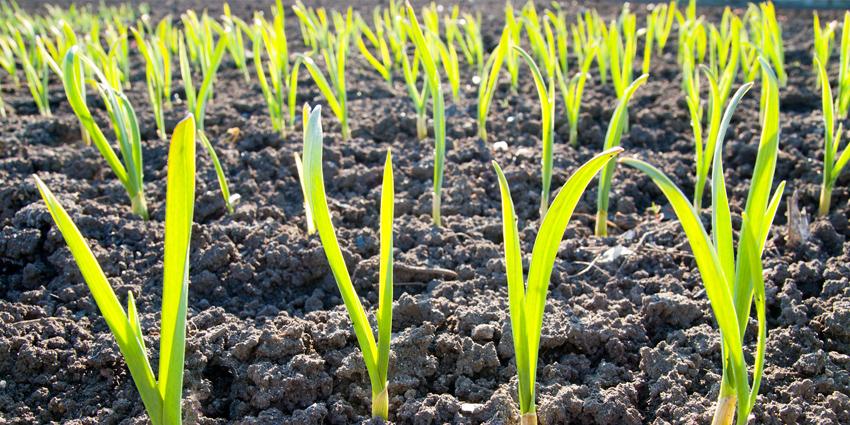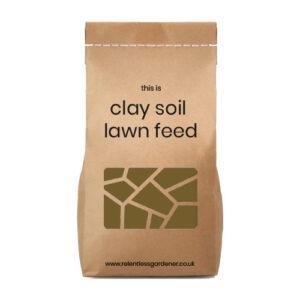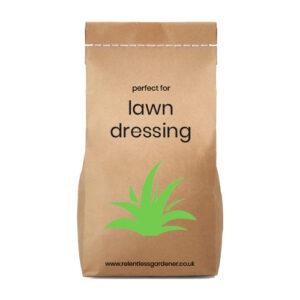
Created By
Matt Adams
Updated On
- March 1, 2024
Get FREE Exclusive Access
Keep your lawn pristine with exclusive tips, offers and insights that I only share with my private subscribers.
Latest Posts
How to improve clay soil for the TOUGHEST UK lawns
- By Matt Adams
- March 1, 2024
Jump to
Get FREE Exclusive Access
Keep your lawn pristine with exclusive tips, offers and insights that I only share with my private subscribers.
One thing I’ve learnt by speaking to customers is that clay soil in the UK is very common. It’s also a very difficult soil type to get a great looking lawn.
Not to worry though, this post will explain how you can make your clay soil bed the perfect breeding ground for grass seed to germinate and live life to the full. While making your garden look great of course.
Note: it’s usually better to use organic based products on clay because the nutrients in non-organic products won’t release from the soil because of the soil’s high levels of density.
The best way for me to talk you through the process of improving your clay soil bed for a lawn is by giving you the different things to do during the year.
So let’s begin.
Related Products
-
Clay Soil (Organic) Lawn Feed
- £0.14 - £0.69 / per m2
- Rated 4.83 out of 5
- Select options
-
- Out of Stock
Calcified Seaweed – 100% Organic Soil Conditioner
- £0.21 - £0.98 / per m2
- Rated 5.00 out of 5
- Read more
-
FEBRUARY
Check the PH level
One of your first tasks is to check the PH scale of the soil. Usually clay soils are on the lower side of the PH scale. Meaning it’s probably highly acidic. So, the improvement options mentioned below are also designed to help increase the PH levels of the soil so that it’s closer to somewhere between 5.5 and 7 – the optimum level for grass to grow.
As of this writing you can easily get hold of a simple PH soil measure from a local garden centre and most of them are dead easy to use.
APRIL
As the weather warms up and the grass begins growing more rapidly, you can give the soil a bit of aeration and one or a few different top dressings. All of these below will provide a benefit whether used individually or together.
Aerate the clay soil bed
Aerating is the perfect way for decompaction of the soil. Clay is renowned for being very compact so going over with the aerator can do wonders for the lawn,
Depending on the size of your lawn, this can take quite a bit of time, especially if you aerate manually,
If you have a large lawn, then it’s a good idea to hire an aerator. If you want to manage your lawn yourself in the future, then it could even be worth investing in an electric aerating machine.
If you want to find out more about the different aerating tools tried and tested – have a read of my other article ‘How to aerate your lawn’
Once you’ve aerated, it’s time for the top dressings.
Apply organic Calcified Seaweed or non-organic lime
Calcified Seaweed will most definitely make an acidic soil more alkaline, so if you’ve checked the PH of yours and you find it needs an adjustment, then calcified seaweed is a great option for use as a lawn dressing in Spring time.
This application is designed to get into the soil and significantly improve its general structure. Above and beyond helping the soil, it will also help promote greener grass blades by creating better growing conditions.
Read more about calcified seaweed on our product page
A non-organic Lime dressing would also help turn your soil more alkaline but you will want to be careful about how much you add so that it doesn’t go the other way.
Apply a top dressing of soil and sand
Once you’ve helped the soil with a layer of calcified seaweed, it’s a good idea to add a slightly thicker layer of soil and sand. a 70/30 sand to soil is a good option for clay soil types. You can apply this stuff at a rate of 2kg per square metre or 4kg per square metre – it will most likely depend on budget and desire to improve the soil.
Most sports professionals, like lawn bowls and golf courses will apply regular feeds of soil/sand top dressing because it’s most suited to fine lawns. But still works great on most lawn types so don’t hesitate to use it on your clay soil.
Apply an organic compost layer
Compost is arguably the best and most organic way of improving a clay soil bed. You can apply about a quarter of an inch and these days it’s highly recommended to use peat free compost.
Alternatively, you can make your own ‘home-made’ compost. You want to be careful that it is fully clean and doesn’t contain anything that might create weeds in the lawn.
MAY
Often in the UK, late frost can cripple your opportunity to sow new grass seed, so waiting until May is sometimes the best option.
Overseed with grass seed that is high in perennial ryegrass
Perennial Ryegrass is one of those grass types that will do well in almost any soil. Our hard wearing grass seed or fast growing ‘all-round’ grass seed is designed to germinate well in all soils, especially clay.
Tall fescues can also do well but they just don’t look that great on a domestic lawn. Tall fescues are mostly used where a ‘good look’ is less of an important factor.
Our hard wearing seed contains 80% perennial ryegrass, so it’s all but guaranteed to germinate well in a clay soil bed.
In order to get the best from your lawn, it’s recommended to overseed in Spring and then again in Autumn too. Just so you can be sure to catch any spots which struggle to germinate well.
JUNE / JULY / AUGUST
Use an organic spring & Summer fertiliser
Before you know it, the Spring has turned into Summer and the weather is now warming up. It’s now time to apply our ‘droughtsafe’ clay soil fertiliser.
In Spring & Summer you can apply a high nitrogen organic fertiliser. Doing so will get the grass growing strong.
Apply a liquid seaweed
As mentioned above, it’s better to use organic feeds on clay soils. And during the height of the Summer, it’s also recommended to use a liquid feed rather than a granular one. So, liquid seaweed lawn feed is the perfect option. Applying a liquid feed every 4 weeks, will not only help the soil but will also help the lawn turn greener in colour by making the grass blades more healthy.
A liquid Summer feed is particularly useful for lawns that are next to large conifers.
Mowing the lawn
Mowing frequently is an important task when it comes to managing your lawn throughout the growing season. The lawn naturally gets more stressed as the weather warms up, so keeping it at a healthy height by mowing consistently will help to keep it stay strong and of course green.
Consistent mowing will also help fight off disease and pests.
Different lawns will have different height requirements so be sure to find out the recommended height for your grass blades.
Another tip: More consistent mowing can aid the mulching process. Returning shorter blades to the lawn will give way more benefits than longer blades because longer ones are weaker and less nutritious.
To find out more about mowing consistently have a read of this article.
SEPTEMBER / OCTOBER
In Autumn, you will want to use an organic feed that’s high in phosphate. If you can catch a dry day, A good, high phosphate and potassium feed would be a bone meal product of some sort. It’s also a great idea to do an Autumn scarify.



This Post Has 19 Comments
Great tips in this post! I didn’t realize how beneficial adding organic matter could be for clay soil. I’m excited to try some of these suggestions to help my lawn thrive, especially with the challenging UK weather. Thanks for sharing!
Great tips! I’ve struggled with my clay soil for years, and the advice on organic matter really struck a chord. I’ll definitely be trying the compost technique this weekend. Thanks for sharing your insights!
Great tips! I’ve struggled with my clay soil for years, so your suggestions on using organic matter and the right fertilizers are super helpful. Can’t wait to try out these methods for a healthier lawn!
Hi Matt
We have a new build home on very heavy clay soil which is waterlogged in many areas. We are planning to hollow tine and then top dress – would you recommend compost for this or top soil/sand? Or do you do one and then the other?
Thanks!
Today is sept 21st, I have been adding a mix of top soil & sand to level my lawn for the last week & been aerating also. From the recent rain we have had some parts are getting a little boggy due to the clay soil.
Is it a good time now to start over seeding or not?
Hi Rob, Definitely now a good time to overseed. Sept/Oct are perfect conditions
If you’re only getting started in October, is there anything else you’d do other than what’s stated for September/October?
Hi Al, That depends on how good/bad the lawn is. Usually an Autumn Feed is enough but you may wish to scarify and overseed too if it needs it.
Does a top dressing of soil and sand literally mean you cover your grass in soil and sand?
There’s a specialist product called ’70/30 sand/soil mix’. I’d try to source it locally if possible.
Hi,
Would this work on lawns where there is no grass left.
I’ve had drainage & sumps put in and had new lawn laid inbetween but due to amount of rain we’ve had (I’m in East Lancashire) I have waterlogged ground, clay underneath.
Will procedure of seaweed onwards help & are these safe to use around dogs or do I need to stop dogs going on garden while this takes place?
Thanks
Hi Diane, you should apply some compost and seed if there isn’t any grass left. These will only help to maintain a lawn rather than create one. Yeah anything that’s 100% organic is pet friendly.
Thanks Matt. Would this approach still work for existing lawns? I’m in a new build (moved in during December) and the garden lawn they have laid is really squishy underfoot. It’s a very clay soil area so trying to gauge the best approach.
Hi Blair, yes definitely for existing lawns too. Lots of aeration, maybe a top dressing of sand and our Clay Soil feed in Spring & Summer will help. Cheers, Matt
Thank you very informative but we are still getting the odd frosty night can I still follow your monthly schedule?.
Hi Jacqui, you can start scarifying and aerating but I’d wait util the frost has cleared before sowing seed. Hope that helps. Cheers, Matt
Hi Matt, so glad I found this lawn care regime. If I am starting now, should I follow from June onwards? I think the lawn could do with your soil and sand recommendations. I’ve had some work a done in the garden recently and the grass is looking thin and the ground (clay soil is very hard already. Any advice would be most appreciated. Thanks
Hi Paul, Yeah I’d start from the Summer point and work through to next season.
All very useful. I live in in area of excessively heavy clay.
THANKS.